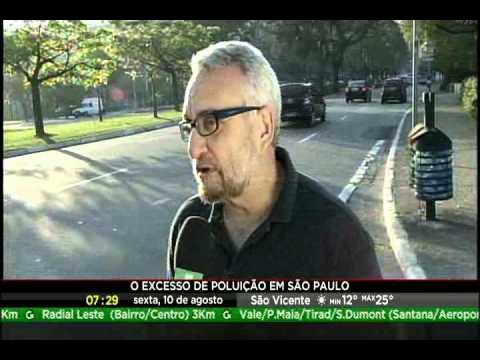Health Effects of Air Pollution
Summary
TLDRThe speaker highlights the critical issue of air pollution and its impact on health, particularly in Nepal, a country affected by pollution from neighboring nations like China and India. The discussion covers the harmful effects of air pollution on the lungs, contributing to diseases like cancer, heart conditions, and respiratory issues. The speaker emphasizes the need for public awareness, policy advocacy, and civil protests to address air pollution. Effective measures must be backed by feasible alternatives for communities reliant on polluting fuels. Overall, a call to action is made for collective efforts to mitigate pollution's impact.
Takeaways
- 🌍 Clean air is essential for human health, but pollution remains a growing challenge both globally and regionally.
- 😷 More than 3.5 million people die annually from air pollution, with the issue worsening in countries like China and India.
- 📊 Air pollution significantly contributes to non-communicable diseases like diabetes, hypertension, heart disease, and cancer.
- 🫁 The human lung is designed to filter air, but pollutants damage the lungs' structure and function over time, leading to chronic diseases.
- ⚠️ Coarse particles (PM10) are trapped in the upper respiratory tract, while finer particles (PM2.5) penetrate deeper, causing more harm.
- 🏡 Indoor air pollution, caused by cooking with biomass and poor hygiene, also poses significant health risks, particularly in rural areas.
- 👶 Exposure to air pollution during pregnancy can lead to low birth weight and other health issues for newborns.
- 💡 Public awareness and civil protest are essential in pressuring governments to implement effective policies to reduce pollution.
- 📉 Reducing particulate matter in the air can significantly improve life expectancy and overall health outcomes.
- 📜 Legislative measures, combined with viable alternatives for affected communities, are critical to addressing the root causes of air pollution.
Q & A
What is the main challenge regarding air pollution mentioned in the script?
-The main challenge is that air pollution continues to affect health globally, regionally, and locally, despite the recognition of its dangers.
How many people are estimated to die due to air pollution annually, according to the script?
-More than 3.5 million people are estimated to die annually due to air pollution.
What type of diseases are increasing globally due to air pollution?
-Non-communicable diseases such as diabetes, hypertension, heart disease, respiratory diseases, and cancer are increasing due to air pollution.
What is the mechanism by which air pollution harms the lungs?
-Air pollution harms the lungs by introducing harmful particles into the respiratory system. These particles can obstruct airways, damage lung tissue, and reduce the oxygen-carrying capacity of the lungs.
What is the difference between primary and secondary pollutants?
-Primary pollutants are directly emitted into the atmosphere, while secondary pollutants form when chemicals in the atmosphere react to create new harmful substances.
What are the sources of indoor pollution mentioned in the script?
-Indoor pollution sources include the burning of biomass fuels for cooking, smoke, and biological allergens due to poor hygiene and moisture levels inside homes.
What structural changes occur in the lungs due to long-term exposure to pollutants?
-Long-term exposure to pollutants leads to narrowing of the airways, obstructing airflow, and causing structural damage to the lung tissue, resulting in conditions like chronic obstructive pulmonary disease (COPD).
What are some diseases caused by air pollution, as listed in the script?
-Diseases caused by air pollution include respiratory infections, chronic obstructive pulmonary disease (COPD), asthma, cancer, tuberculosis, low birth weight in babies, cataracts, hypertension, and heart attacks.
What public health guidelines are mentioned for air pollution control?
-The World Health Organization (WHO) and national guidelines specify allowable levels of pollutants such as particulate matter (PM10), carbon monoxide, and carbon dioxide to minimize health risks.
What are some actions suggested to combat air pollution at both the individual and societal level?
-At the individual level, actions include quitting smoking, avoiding indoor pollutants, and wearing masks. At the societal level, public awareness, civil protests, policy advocacy, and the creation of feasible alternatives to pollutant-causing activities are suggested.
Outlines

This section is available to paid users only. Please upgrade to access this part.
Upgrade NowMindmap

This section is available to paid users only. Please upgrade to access this part.
Upgrade NowKeywords

This section is available to paid users only. Please upgrade to access this part.
Upgrade NowHighlights

This section is available to paid users only. Please upgrade to access this part.
Upgrade NowTranscripts

This section is available to paid users only. Please upgrade to access this part.
Upgrade NowBrowse More Related Video

Debunking 3 myths about air pollution | Nat Geo Explores

Paryavaran Pradushan || पर्यावरण प्रदूषण || प्रदूषण के प्रकार और रोकने के उपाय

Environmental pollution killing more people than war, study says

Guia do Trânsito - Poluição em São Paulo

PEMBUNUH SENYAP JAKARTA: Menggugat Polusi Udara Jakarta

Fakta pencemaran Lingkungan
5.0 / 5 (0 votes)